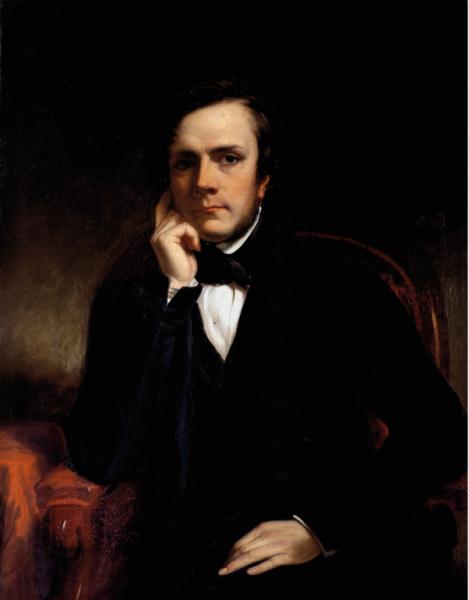Selected paintings from Te Rū Movers and Shakers: Early New Zealand Portraits by William Beetham, an exhibition toured by the National Portrait Gallery.
William Beetham established a career as a professional portrait artist in England, but, anxious about prospects for his children, he emigrated to New Zealand with his family in 1855. The following year he founded what became one of New Zealand’s most extensive pastoral stations – Brancepeth, in the Wairarapa.
Born at Doncaster in Yorkshire in 1809, William Beetham studied art and became an accomplished portrait painter. In 1834, aged a tender twenty five and ready for success he exhibited at the prestigious Royal Academy in London.
Mary and William had seven sons and three daughters who he supported through commissioned portrait work. Like many others worried by Britain’s crippling unemployment in the 1850s, he looked towards the colonies for improved financial opportunities for his family, and after considering Australia and Canada the household emigrated to New Zealand in 1855.
Once settled he continued painting and his close location to Wellington, New Zealand’s new Capital, meant he was often given the responsibility of capturing the ‘movers and shakers’ of the young New Zealand colony - rangitira, politicians, pastoralists, merchants, and their wives. The Beetham sons, especially William and George, also became prominent in colonial Wellington.
In its heyday there were more than 300 employees at Brancepeth. The hub of the station clustered around the 32-room homestead with an imposing battlemented tower (rebuilt in 1905 after an earthquake), a grand stable with a coach-house, housing a large collection of horses, buggies and motorcars, a subscription library of 2000 Victorian books, a school, a smithy, a store, cookhouse, slaughterhouse, large kitchen gardens and a number of work camps in the hill-country.

Self Portrait 1850s, Beetham Family Collection Wairarapa.
In the early 1900s Brancepeth Station was subjected to compulsory Government subdivision, and in 1905 the land was divided amongst the Beetham and Williams families. The extent of Brancepeth Station was lessened further by a government-imposed purchase in 1914, and again after World War II. Today over 40 farms plus other smaller properties occupy the land which was once Brancepeth at its peak.
Most of the portraits in this exhibition are owned by descendants of William and Mary Beetham and other early Wairarapa settlers.
For a fascinating account of daily life at Brancepeth in the 1890s and what life was like for the people who worked there see ‘Reading on the Farm’ by Lydia Wevers, a history of the Brancepeth Library.
‘Reading on the Farm’ is a social history of Brancepeth seen through the library and its readers. The readers, especially John Vaughn Miller, the cantankerous and opinionated farm clerk, wrote comments in the books, spilled their tea and dinner on them, pressed flowers and dropped burning tobacco. Someone even drew a caricature of Hugh Beetham on the title page of a book. Lydia Wevers draws on the station diary, annotations in the library books and the Beetham family papers to bring Brancepeth to life more than a hundred years ago.
Reading on the Farm Victorian Fiction and the Colonial World, Victoria University Press, available from Aratoi and Hedleys Booksellers, Masterton